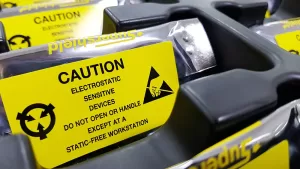Introduction
Navigating the complex world of electronics manufacturing, one quickly realizes the critical role of Electrostatic Discharge (ESD) protection. While basic tools and techniques for mitigating ESD risks are commonly known, the governing standards often remain shrouded in mystery. This guide aims to demystify these standards, emphasizing their role as the foundation of quality and reliability in the electronics sector.
The Genesis of ESD Standards
Before the advent of ESD standards, the electronics industry operated in a fragmented manner. Such disorganization led to inconsistent product quality, elevated failure rates, and dwindling consumer trust. Recognizing this gap, industry leaders and standardization organizations collaborated to create ESD standards. These guidelines now serve as the backbone of ESD protection, instilling a sense of reliability among consumers and ensuring products meet specific quality benchmarks.
ANSI/ESD S20.20: The Gold Standard
Among various ESD standards, ANSI/ESD S20.20 is particularly noteworthy for its widespread adoption in the United States. Crafted by the Electrostatic Discharge Association (ESDA), this standard provides a comprehensive framework for an ESD control program. It encompasses a wide range of elements, from personnel grounding to packaging materials. Consequently, ANSI/ESD S20.20 has become the go-to guideline for companies striving for the highest levels of quality and safety.
IEC 61340: The International Perspective
Global companies often turn to the International Electrotechnical Commission’s IEC 61340 standard. Harmonizing well with ANSI/ESD S20.20, this standard offers additional guidelines tailored for international markets. Compliance not only ensures product quality but also smoothens the path for international trade, minimizing the risk of regulatory obstacles.
MIL-STD-1686: Specialized for Military Applications
For mission-critical environments like military and aerospace, ESD protection takes on heightened importance. MIL-STD-1686, a U.S. military standard, addresses these unique challenges. Although not a common choice for civilian applications, this standard sets an exceptionally high bar for extreme conditions.
Why Standards Matter: Beyond the Checkbox
Adhering to ESD standards isn’t just a procedural formality; it’s a strategic investment in product quality and brand reputation. These guidelines serve as a roadmap for best practices, helping companies sidestep costly errors and legal complications. Furthermore, they encourage a culture of continuous improvement by establishing performance benchmarks.
Conclusion: The Ever-Evolving Landscape
As we look to the future, it’s clear that ESD standards will continue to evolve in tandem with technological advancements. Professionals involved in the manufacturing, distribution, or handling of electronic components must stay updated. A structured approach to ESD protection, as outlined by these standards, elevates both product quality and consumer trust. For more information on ESD packaging solutions, check out Custom ESD Packaging Solutions by Malaster. If you’re interested in the role of JEDEC trays in protective IC packaging, you can read more here.
